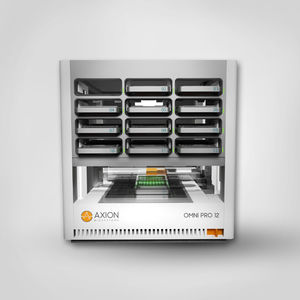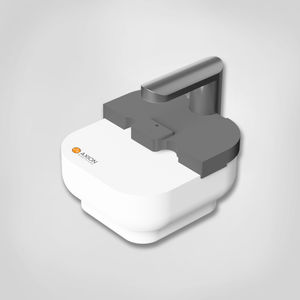
- Laboratory
- Laboratory medicine
- Automatic cell imaging system
- Axion BioSystems

- Company
- Products
- Catalogs
- News & Trends
- Exhibitions
Fluorescence cell imaging system Lux3 FLautomatedlaboratoryfor cell culture
Add to favorites
Compare this product
fo_shop_gate_exact_title
Characteristics
- Operation
- automated
- Applications
- laboratory, for cell culture, cell imaging, apoptosis, for stem cells, for cell differentiation, for research, tissue, for tissue culture, pathology
- Cell type
- for blood cells, mammalian cells, for proteins, for cervical cells, skin epithelial cells, sperm cells
- Observation technique
- fluorescence, for live cells, phase contrast, bright field
- Other characteristics
- with integrated camera
Description
The CytoSMART Lux3 FL is a small fluorescence live-cell imaging microscope equipped with one brightfield and two fluorescent channels (green and red). The device enables researchers to unravel cellular processes in real-time, providing lots of valuable data about the experiments and answers if, when, how, and to what extend the cellular processes occur. CytoSMART’s first fluorescence live-cell imager allows users to track dynamic cellular processes with high specificity by taking high-quality images to create real-time time-lapse movies. Simultaneously, the cells are kept in a controlled environment inside a standard cell culture incubator.
The main features and benefits of the CytoSMART Lux3 FL include:
• - Integrated image analysis of bright-field and fluorescence area or fluorescence object count.
• - Time lapse movies to investigate the development of cellular processes.
• - Expanded number of variables researchers can analyze in their cell culture using green and red fluorescence.
• - Remote data accessibility via the CytoSMART Cloud with a smartphone, tablet, or laptop outside the lab.
• - Portable, easy-to-use and incubator friendly live-cell imager.
Currently, fluorescent labeling is mostly used as an end-point measurement. However, time-lapse imaging of live cells can give much more information about biological processes. By using automated imaging at regular time intervals, the temporal resolution of the fluorescent data is increased, leading to even more relevant data about the cellular processes. In this way, researchers can not only determine if a certain process has occurred, but also when it occurred and at what speed.
Related Searches
- Automated cell imaging system
- Cell imager
- Laboratory cell imager
- Cell counter
- Automated cell counter
- Fluorescence cell imaging system
- Benchtop cell counter
- Digital cell counter
- High-resolution cell imaging system
- Research cell imaging system
- Live cell cell imaging system
- Fluorescence cell counter
- Image-based cell counter
- Molecular biology cell imaging system
- Cell imaging cell imaging system
- Phase contrast cell imaging system
- Tissue cell imaging system
- Blood cell cell imaging system
- Bright field cell imaging system
- Cell culture cell imaging system
*Prices are pre-tax. They exclude delivery charges and customs duties and do not include additional charges for installation or activation options. Prices are indicative only and may vary by country, with changes to the cost of raw materials and exchange rates.











